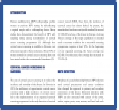Role of human papillomavirus self-sampling in cervical cancer screening
Vloga samoodvzema brisa na HPV v presejanju za raka materničnega vratu
DOI:
https://doi.org/10.18690/actabiomed.201Keywords:
HPV self-sampling, cervical cancer, screening, Pap smearAbstract
Cervical cancer screening has successfully reduced the incidence and mortality of cervical cancer in many countries. In Slovenia, the incidence of cervical cancer decreased in 2003–2015 by almost 50%. Participation in screening has reached about 72% over the last 3 years. The main cause of cervical cancer is infection with human papillomaviruses (HPVs). For this reason, in 2010, HPV testing was included in the national screening programme ZORA for triage of low-grade lesions and as a test of cure in 2010. Even though screening is free of
charge and accessible in Slovenia, about 30% of women still do not respond to invitations and are not screened regularly, especially women aged 50–64 years. HPV self-sampling could improve the detection of precancerous changes among non-attenders of the cervical cancer screening program. By using a validated PCR HPV DNA test, cervical and vaginal HPV sampling have similar accuracy for the detection of CIN 2+, resulting in the same or higher accuracy than the Pap test. Women describe HPV self-sampling as user-friendly, intimate, less embarrassing, and less painful than the Pap smear. About one-quarter to one-third of non-attenders of regular screening responded to the invitation to perform self-sampling. In a Slovenian randomised trial, the overall response rate was more than one-third and was not much higher in an opt-out
compared to opt-in approach. HPV self-sampling could lead to an improvement in the detection of precancerous cervical lesions. European guidelines for quality assurance on cervical cancer screening recommend HPV self-sampling in women who do not attend regular cervical screening programmes.
Downloads

Downloads
Published
Issue
Section
License
Copyright (c) 2020 Acta Medico-Biotechnica

This work is licensed under a Creative Commons Attribution 4.0 International License.